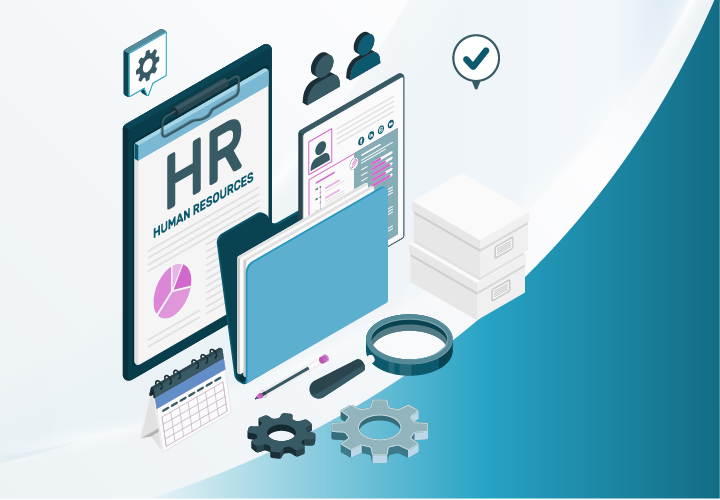About this course
Human Resources (HR) Internship Program: 6-Week Structured Learning and Experience
This HR internship program provides a comprehensive understanding of key human resources functions and hands-on experience over six weeks. Interns will gain insights into HR management, recruitment, training and development, employee engagement, and HR analytics.
Program Highlights
Week 1: Introduction to HR & Recruitment
· Research and write a report on the role of HR in organizational success.
· Design a recruitment plan for a specific job role.
Week 2: HR Policies, Onboarding & Training
· Draft an employee handbook section on workplace harassment.
· Create an onboarding checklist for new employees.
· Design a one-day training program for soft skills.
Week 3: Performance & Compensation
· Develop a performance appraisal form for mid-level managers.
· Propose a benefits package for a startup company.
· Plan a team-building activity for a department.
Week 4: Diversity, Conflict Resolution & Analytics
· Design a diversity training module for employees.
· Create a case study on resolving a workplace conflict scenario.
· Use a dataset to analyze employee turnover trends.
Week 5: Succession, Motivation & Labor Laws
· Draft a succession plan for a leadership position.
· Develop a reward and recognition program.
· Summarize key labor laws relevant to the workplace.
Week 6: Change Management, Remote Work & Final Project
· Create a communication plan for implementing a major change in an organization.
· Develop a policy for remote work arrangements.
· Propose strategies to improve retention in a high-turnover industry.
· Analyze the organizational structure of a company and suggest improvements.
· Design an exit interview questionnaire.
· Develop an HR strategy for a hypothetical company, covering recruitment, training, policies, and analytics.
Expected Outcomes
By the end of the program, interns will:
· Gain hands-on experience in HR functions.
· Improve their analytical and strategic thinking in human resources.
· Develop a solid understanding of HR management, recruitment, and employee engagement.
· Be able to implement HR strategies for workforce development.
Requirements
Laptop
Internet Connection
Microsoft Excel
Microsoft Word
Microsoft Powerpoint
Comments (0)
To understand the fundamental role of HR in organizational success by exploring key HR functions and their impact on overall business performance.
To design a comprehensive recruitment plan for a specific job role, focusing on identifying the right candidates efficiently and aligning the process with organizational goals.
To create a detailed and concise policy on workplace harassment for inclusion in an employee handbook. The goal is to ensure that employees understand the organization’s stance on harassment, the procedures for addressing issues, and the mechanisms for reporting incidents.
To design a detailed onboarding checklist that ensures new employees have a smooth transition into the organization, are equipped with necessary tools and resources, and are aligned with company culture and expectations.
To design a one-day training program focused on developing key soft skills, such as communication, teamwork, and problem-solving, that are essential for workplace success.
To develop a comprehensive performance appraisal form tailored for mid-level managers, focusing on measurable criteria that assess leadership, strategic contributions, team management, and role-specific competencies.
To design a well-rounded benefits package tailored for a startup company, ensuring it attracts top talent, retains employees, and aligns with the organization’s budget and culture.
To design a detailed team-building activity that fosters collaboration, improves communication, and enhances employee engagement within a specific department.
To design a comprehensive diversity training module that educates employees about the importance of diversity, fosters inclusivity, and promotes equitable practices in the workplace.
To create a realistic case study that illustrates a workplace conflict scenario, providing a detailed analysis of the conflict and outlining effective resolution strategies.
To analyze employee turnover trends using a dataset and provide actionable insights to improve employee retention and satisfaction.
To develop a structured succession plan for a leadership position that ensures business continuity and identifies potential candidates while addressing their training and development needs.
To develop a comprehensive reward and recognition program that motivates employees, improves engagement, and reinforces behaviors aligned with organizational goals.
To provide a concise summary of key labor laws relevant to the workplace, ensuring that employees and employers understand compliance requirements and foster a legally sound work environment.
To create a comprehensive communication plan for implementing a major organizational change, ensuring transparency, employee engagement, and minimal disruption to operations.
To create a formal policy for remote work arrangements, ensuring clear expectations, eligibility criteria, and proper use of tools and resources to maintain productivity and collaboration.
To propose effective strategies for improving employee retention in a high-turnover industry by addressing the root causes of attrition and fostering a supportive and engaging workplace.
To analyze the current organizational structure of a company, identify areas for improvement, and recommend strategies for enhancing efficiency, communication, and decision-making.
To create an insightful exit interview questionnaire that gathers feedback from departing employees, helping the organization identify areas for improvement and reduce future turnover.
To develop a comprehensive HR strategy for a hypothetical company that addresses recruitment, training, policies, analytics, and other critical HR functions. The strategy should integrate insights and best practices from previous tasks to support the company's overall goals.









